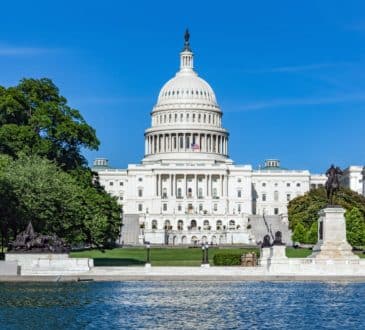How Normalcy Bias Led Boeing to Crash Into Disaster

Due to the grounding of its 737 Max airplane following 2 deadly crashes that killed 346 people, Boeing lost $5 billion in direct revenue by the summer of 2019. The overall losses – ranging from damage to the brand to losing customers – were valued by investors at over $25 billion by March 2019. In late 2019, new revelations about problems with the 737 Max further increased Boeing’s losses. In late December, Boeing fired its CEO Dennis Muilenburg due to the 737 Max fiasco.
What led to this disaster for Boeing?
On the surface, it came from Boeing’s efforts to compete effectively with Airbus’s newer and more fuel-efficient airplane, Airbus 320. To do so, Boeing rushed the 737 Max into production and misled the Federal Aviation Administration (FAA) to get rapid approval for the 737 Max. In the process, Boeing failed to install safety systems that its engineers pushed for and did not address known software bugs in the 737 Max, glitches that resulted in the eventual crashes.
Yet there are deeper problems at hand, ones that relate to the same problems that caused so many to underestimate the COVID pandemic in March 2020 and the Delta surge in June 2021.
The New Normal
However, these surface-level issues had a deeper cause. Ironically, the transformation of the airline industry in recent decades to make airplanes much safer and accidents incredibly rare is key to understanding Boeing’s disaster.
Boeing’s leadership suffered from what cognitive neuroscientists and behavioral economists know as the normalcy bias. This dangerous judgment error causes our brains to assume things will keep going as they have been – normally. As a result, we drastically underestimate both the likelihood of a disaster occurring and the impact if it does.
Boeing’s 737 Max disaster is a classic case of the normalcy bias. The Boeing leadership felt utter confidence in the safety record of the airplanes it produced in the last couple of decades, deservedly so, according to statistics on crashes. From their perspective, it would be impossible to imagine that the 737 Max would be less safe than these other recent-model airplanes. They saw the typical FAA certification process as simply another bureaucratic hassle that got in the way of doing business and competing with Airbus, as opposed to ensuring safety.
Think it’s only big companies? Think again.
The normalcy bias is a big reason for bubbles: in stocks, housing prices, loans, and other areas. It’s as though we’re incapable of remembering the previous bubble, even if occurred only a few years ago.
Similarly, the normalcy bias helps explain why leaders at companies of all sizes were so vastly underprepared for COVID-19 and its impact. While pandemics post a major threat, it’s a low-likelihood, high-impact, slow-moving disaster. The normalcy bias keeps tripping us up on such disasters, unless we take effective steps to deal with this problem.
Normalcy Bias in a Tech Start-Up
Of course, the normalcy bias hits mid-size and small companies hard as well.
At one of my frequent trainings for small and mid-size company executives, Brodie, a tech entrepreneur shared the story of a startup he founded with a good friend. They complemented each other well: Brodie had strong technical skills, and his friend brought strong marketing and selling capacity.
Things went great for the first two and a half years, with a growing client list – until his friend got into a bad motorcycle accident that left him unable to talk. Brodie had to deal not only with the emotional trauma, but also with covering his co-founder’s work roles.
Unfortunately, his co-founder failed to keep good notes. He also did not introduce Brodie to his contacts at the client companies. In turn, Brodie – a strong introvert – struggled with selling. Eventually, the startup burned through its cash and had to close its doors.
The normalcy bias is one of many dangerous judgment errors, mental blindspots resulting from how our brains are wired. Researchers in cognitive neuroscience and behavioral economics call them cognitive biases.
Fortunately, recent research in these fields shows how you can use pragmatic strategies to address these dangerous judgment errors.
Preventing Normalcy Bias Disasters
With the normalcy bias in particular, it really helps to use the strategy of considering and addressing potential alternative futures that are much more negative than you intuitively feel are likely. That’s the strategy that Brodie and I explored in my coaching with him after the training session, as he felt ready to get back to the startup world.
While Brodie definitely knew he wouldn’t be up to starting a new business himself, he also wanted to avoid the previous problems. So we discussed how he would from the start push for creating systems and processes that would enable each co-founder to back up the other in cases of emergencies. Moreover, the co-founders would commit to sharing important contacts from their side of the business with each other, so that relationships could be maintained if the other person was out of commission for a while.
So what are the broader principles here?
1) Be much more pessimistic about the possibility and impact of disasters than you intuitively feel or can easily imagine, to get over the challenges caused by the normalcy bias.
2) Use effective strategic planning techniques to scan for potential disasters and try to address them in advance, as Brodie did with his plans for the new business.
3) Of course, you can’t predict everything, so retain some extra capacity in your system – of time, money, and other resources – that you can use to deal with unknown unknowns, also called black swans.
4) Finally, if you see a hint of a disaster, react much more quickly than you intuitively feel you should to overcome the gut reaction’s dismissal of the likelihood and impact of disasters.
Written by Dr. Gleb Tsipursky.
Add CEOWORLD magazine to your Google News feed.
Follow CEOWORLD magazine headlines on: Google News, LinkedIn, Twitter, and Facebook.
This report/news/ranking/statistics has been prepared only for general guidance on matters of interest and does not constitute professional advice. You should not act upon the information contained in this publication without obtaining specific professional advice. No representation or warranty (express or implied) is given as to the accuracy or completeness of the information contained in this publication, and, to the extent permitted by law, CEOWORLD magazine does not accept or assume any liability, responsibility or duty of care for any consequences of you or anyone else acting, or refraining to act, in reliance on the information contained in this publication or for any decision based on it.
Copyright 2024 The CEOWORLD magazine. All rights reserved. This material (and any extract from it) must not be copied, redistributed or placed on any website, without CEOWORLD magazine' prior written consent. For media queries, please contact: info@ceoworld.biz
SUBSCRIBE NEWSLETTER








